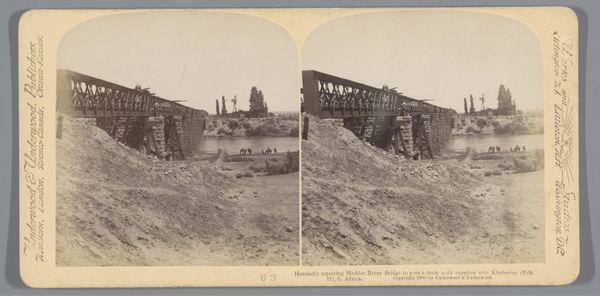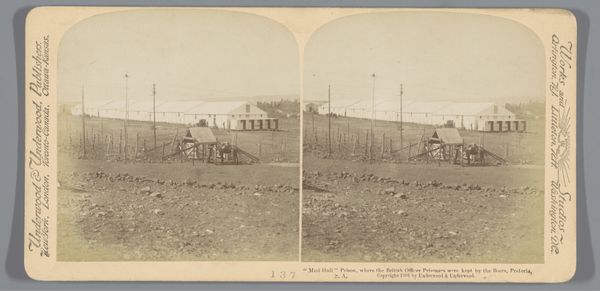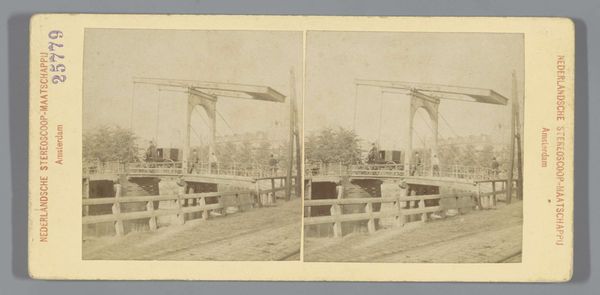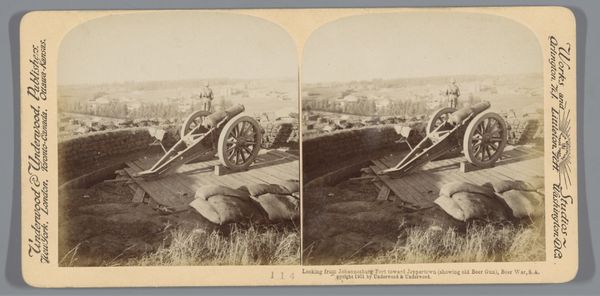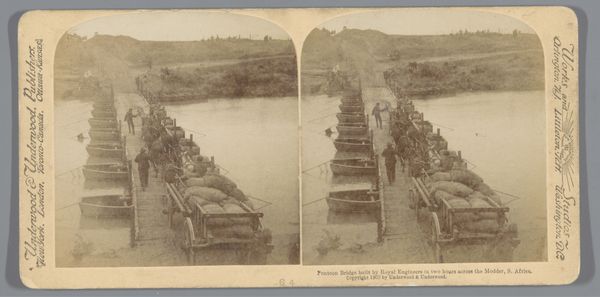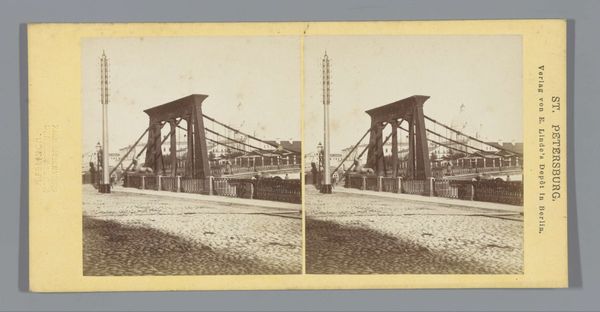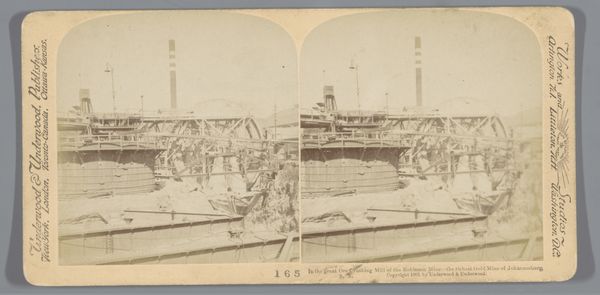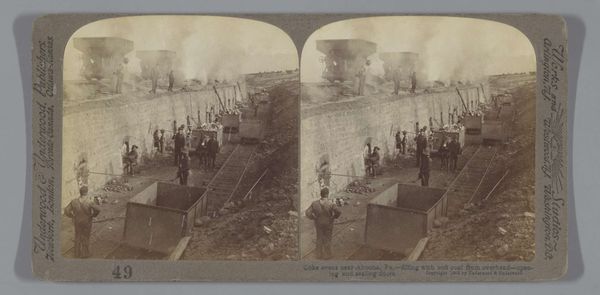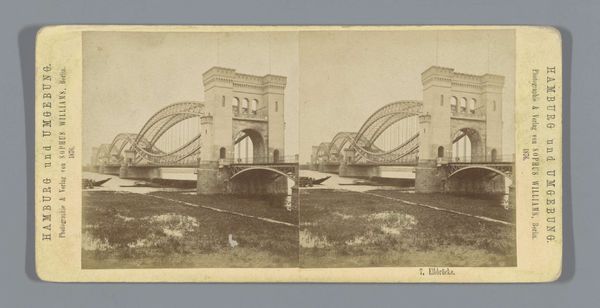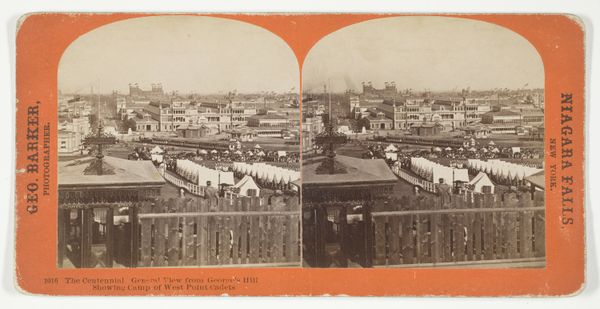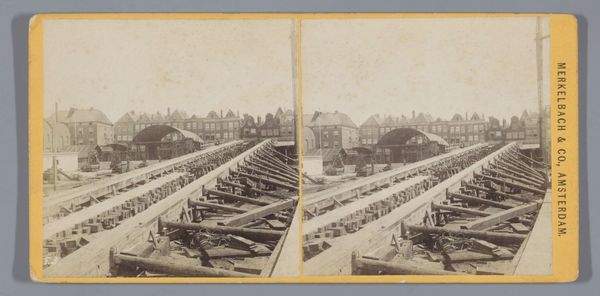
Gezicht op de bouw van een tijdelijke brug over de Renosterrivier in Zuid-Afrika 1900
0:00
0:00
print, photography, albumen-print
# print
#
landscape
#
photography
#
coloured pencil
#
constructionism
#
history-painting
#
albumen-print
#
realism
Dimensions: height 88 mm, width 178 mm
Copyright: Rijks Museum: Open Domain
Curator: This albumen print from around 1900 depicts the construction of a temporary bridge over the Renoster River in South Africa. Editor: My first impression is one of immense labor. The sheer scale of the bridge, coupled with the figures of the workers perched on top, speaks to the colonial exploitation of resources and human effort. Curator: Indeed, the photograph underscores the materiality of progress. We see timber and steel, assembled through considerable effort, representing the industrial expansion into Southern Africa at the turn of the century. The print itself, an albumen print, is a testament to specific photographic processes and labor practices that define the era’s image production. Editor: I see that too, but the "progress" you mention needs further qualification. Who benefited from this railway? It surely expedited the extraction of resources and control over land, enabling the further entrenchment of colonial power structures. Curator: That’s absolutely true. These constructions are the material manifestation of resource exploitation. Note also the details of the landscape. It has been drastically altered, rendered to enable infrastructure that in turn permits greater economic throughput. The construction represents not just literal support but a structure facilitating material extraction. Editor: I would stress this isn’t just about economics but also ideology. A photo like this projected an image of imperial might and technical prowess, both intended to overwhelm and suppress indigenous narratives. Look at how insignificant the individuals appear against this vast industrial intervention. It’s deliberate. Curator: Yes. And from a purely technical view, one can analyze the construction methods of these temporary bridges themselves—scaffolding techniques and labor divisions—that tell us something very concrete about available material inputs and workforce organization. It is important to acknowledge what happened, how, and in what conditions. Editor: Precisely, recognizing that photography itself played a key role in shaping and legitimizing this perspective and these conditions of labor and subjugation. So, by looking at a piece like this, we're engaging with so much more than simply its aesthetic value; we are confronting questions of history and injustice. Curator: Ultimately, reflecting on this photographic construction allows for deeper insight on the physical underpinnings that uphold power structures in any historical period. Editor: And in that reflection, challenge the notion of objective progress, and critically consider how the material and the social have always been intertwined.
Comments
No comments
Be the first to comment and join the conversation on the ultimate creative platform.
